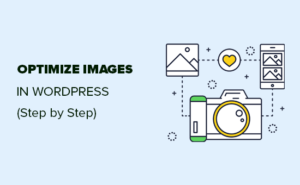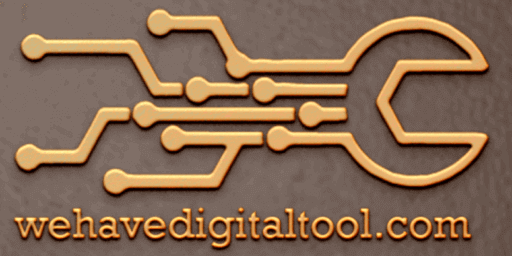How to optimize images for the web without losing quality
Did you recognize that optimizing your images before uploading to WordPress can have a huge impact on your website speed? How to optimize images for the web without losing quality
When starting a New blog, many beginners simply upload images without optimizing them for the web. These large image files make your website slower.
You can fix this by using image optimization best practices as an area of your regular blogging routine.
In this article, we’ll show you ways to optimize your images for faster web performance without losing quality. We will also share automatic image optimization plugins for WordPress which can make your life easy.

Image optimization could also be a process of saving and delivering images within the littlest possible file size without reducing the overall image quality.
While the tactic sounds complex, it’s actually quite easy lately. You can use one among the various image optimization plugins and tools to automatically compress images by up to 80% with no visible loss in image quality.
Here’s an example of an optimized vs unoptimized image:

As you can see, when optimized properly the same image can be 75% smaller than the original without any loss in quality.
How does Image Optimization work?
In simple terms, image optimization work by using compression technology like “Lossy” and “Lossless” which helps reduce the general file size with no noticeable loss of quality.
What does it mean to Optimize Images?
If you ever received a recommendation to optimize images by your WordPress hosting support or by a speed test tool, then all it means is that you simply need to reduce the file size of your images by optimizing them for the web.
Table of Contents
Why is Image Optimization Important? What are the Benefits of Image Optimization?
While there are many benefits of optimizing your images, below are the very best ones that you simply should know:
- Faster website speed
- Improved SEO rankings
- The higher overall conversion rate for sales and leads
- Less storage and bandwidth (which can reduce hosting and CDN cost)
- Faster website backups (also reduces the cost of backup storage)
Outside of video, images are the subsequent heaviest item on an online page. According to HTTP Archive, images structure on the average 21% of a complete web page’s weight.
Since we all know fast websites rank higher in search engines (SEO) and have better conversions, image optimization is the thing that each business website must do if they need to succeed online.
Now you’d possibly be wondering how big of a difference can image optimization really make?
According to a Strangeloop study, a one-second delay in website load time can cost you 7% of sales, 11% fewer page views, and a 16% decrease in customer satisfaction.

If these aren’t enough reasons to hurry up your website, then you need to know that search engines like Google also give preferential SEO treatment to faster loading websites.
This means that by optimizing your images for the web, you can both improve website speed and boost WordPress SEO rankings
How to Save and Optimize Images for Web Performance? How to optimize images for the web without losing quality
The key to successful image optimization for web performance is to hunt out the proper balance between the lowest file size and acceptable image quality.
The three things that play a huge role in image optimization are:
- Image file format (JPEG vs PNG vs GIF)
- Compression (Higher compression = smaller file size)
- Image Dimensions (height and width)
By choosing the proper combination of the three, you’ll reduce your image size by up to 80%.
Let’s take a glance at each of those in additional detail.
1. Image File Format
For most website owners, the only three image file formats that basically matter are JPEG, PNG, and GIF. Choosing the proper file type plays a crucial role in image optimization.
To keep things simple, you’d wish to use JPEGs for photos or images with many colors, PNGs for straightforward images, or once you would like transparent images and GIF for animated images only.
For people who don’t know the difference between each file type, the PNG image format is uncompressed which suggests it is a better quality image. The downside is that file sizes are much larger.
On the other hand, JPEG could also be a compressed file format which slightly reduces image quality so on supply a significantly smaller file size.
Whereas GIF only uses 256 colors alongside lossless compression which makes it the simplest choice for animated images.
On WEhavedigitaltool, we use all three image formats to support the sort of image.
2. Compression
The next thing is compression which plays a huge role in image optimization.
There are different types and levels of compression available. The settings for each will vary relying on the compression tool you use.
Most image editing tools like Adobe Photoshop, On1 Photo, GIMP, Affinity Photo, et al. accompany built-in compression features.
You can also save images normally then use an online tool like TinyPNG or JPEG Mini for easier compression.
Although it’s slightly manual, these two methods allow you to compress images before uploading them to WordPress, and this is often what we do on WEhavedigiltool.
There are also several popular WordPress plugins like Optimole, EWWW Image Optimizer, et al. which will automatically compress images once you initially upload them. Many beginners and even large corporations prefer to use these image optimization plugins because it’s easy and convenient.
We will share more about these WordPress plugins later in the article.
3. Image Dimensions
Normally, once you import a photo from your phone or a camera, it is a really high resolution and massive file dimensions (height and width).
Typically, these photos have a resolution of 300 DPI and dimensions starting from 2000 pixels and more. These high-quality photos are well-suited for print or publication. They are not suitable for websites.
Reducing file dimensions to something more reasonable can significantly decrease image file size. You can simply resize images employing picture editing software on your computer.
For example, we optimized a photograph with 1.8 MB original file size, 300 DPI resolution, and image dimensions of 4900×3200 pixels.
We chose jpeg format for higher compression and altered dimensions to 1200×795 pixels, and it reduced the image file size to 103 KB. That’s 94% less than the original file size.
Now that you simply simply simply know the three important factors in image optimization, let’s take a glance at various image optimization tools for website owners.
Best Image Optimization Tools and Programs
As we mentioned earlier, most image editing software accompanies image optimization and compression settings.
Outside of the image editing software, there are also several powerful free image optimization tools that you simply simply can use to optimize images for the web (with just a few clicks).
We recommend using these tools to optimize images before you upload them to WordPress, especially if you’re a perfectionist.
This method helps you save disk space on your WordPress hosting account, and it guarantees the fastest image with the only quality since you manually review each image.
Adobe Photoshop
Adobe Photoshop could also be a premium software that comes with a feature many |to avoid wasting”> to save lots of lots of images optimized for the web. Simply open your image and click on the “File » but Web” option.
This will open a new dialog box. On the right, you’ll set different image formats. For JPEG format, you’ll see different quality options. When you select your options, it’ll also show you the file size on the lowest left.

GIMP
GIMP could also be a free and open-source alternative to popular Adobe Photoshop. They are often used to optimize your images for the web. The downside is that it isn’t as easy to use as other solutions on this list.
First, you’d wish to open your image in GIMP then select the File » Export As option. This will mention the save file panel. Give your file a replacement name then click on the export button.

This will bring up image export options. For jpeg files, you’ll select the compression level to scale back file size. Finally, click on the export button to save lots of the optimized image file.
TinyPNG could also be a free web app that uses a wise lossy compression technique to reduce the size of your PNG files. All you’ve got to try to do is attend their website and upload your images (simple drag & drop).

They will compress the image and provides you the download link. You can use their sister website, TinyJPG, for JPEG compression.
They even have an extension for Adobe Photoshop which is what we use as a part of our image editing process because it combines the simplest of TinyPNG and TinyJPG inside Photoshop.
For developers, they need an API to convert images automatically, and for beginners, they need a WordPress plugin that will automatically roll in the hay for you (more on this later).
JPEGmini uses a lossless compression technology which significantly reduces the dimensions of images without affecting their perceptual quality. You can also compare the standard of your original image and therefore the compressed image.

You can use their web version free of charge, or purchase the program for your computer. They even have a paid API to automate the tactic for your server.
ImageOptim maybe a Mac utility that permits you to compress images without losing any quality by finding the simplest compression parameters and removing unnecessary color profiles.

Windows alternative to this is Triage.
Best Image Optimization Plugins for WordPress
We believe that the best way to optimize your images is by doing it before uploading them to WordPress. However, if you run a multi-author site or need an automated solution, then you can try a WordPress image compression plugin.
Below is our list of the best WordPress image compression plugins:
- Optimal – popular plugin by the team behind ThemeIsle.
- EWWW Image Optimizer
- Compress JPEG & PNG images – plugin by TinyPNG team mentioned above in the article.
- Imagify – plugin by the popular WP Rocket plugin team.
- ShortPixel Image Optimizer
- WP Smush
- reSmush.it
Using any of these WordPress image optimization plugins will help you speed up your website.
Final Thoughts and Best Practices for Image Optimization
If you’re not saving images optimized for the online, then you would like to start out doing so now. It will make a huge difference in your site speed, and your users will thank you for it.
Not to mention, faster websites are great for SEO, and you will likely see an increase in your program rankings.
Outside of image optimization, the two things that will significantly help you speed up your website are using a WordPress caching plugin and using a WordPress CDN.
Alternatively, you’ll use a managed WordPress hosting company because they often offer both caching and CDN as a neighborhood of the platform.
We hope this text helped you find out how to optimize your images in WordPress. You may also want to ascertain our guide on the way to improve your WordPress security and therefore the best WordPress plugins for business websites.
If you liked this article, then please subscribe to our YouTube Channel for WordPress video tutorials. You can also find us on Instagram and Facebook.


